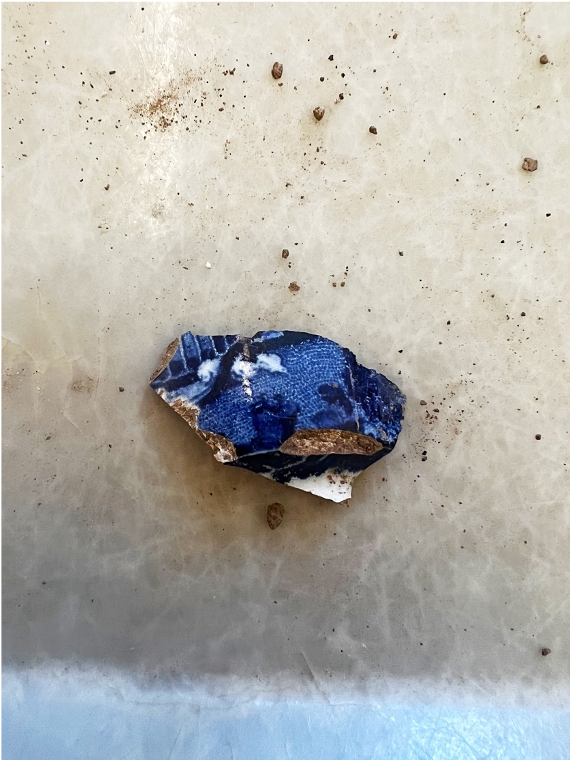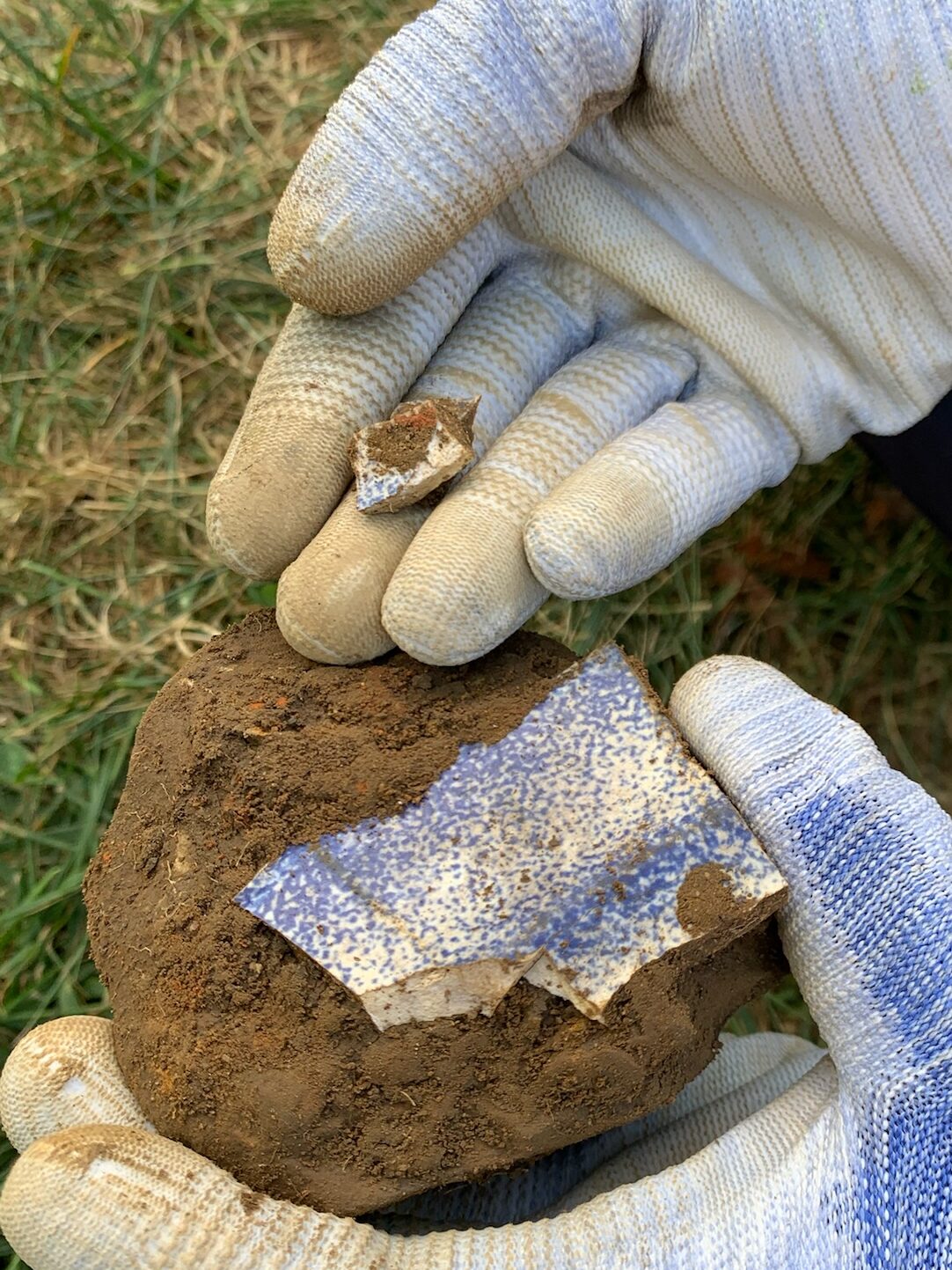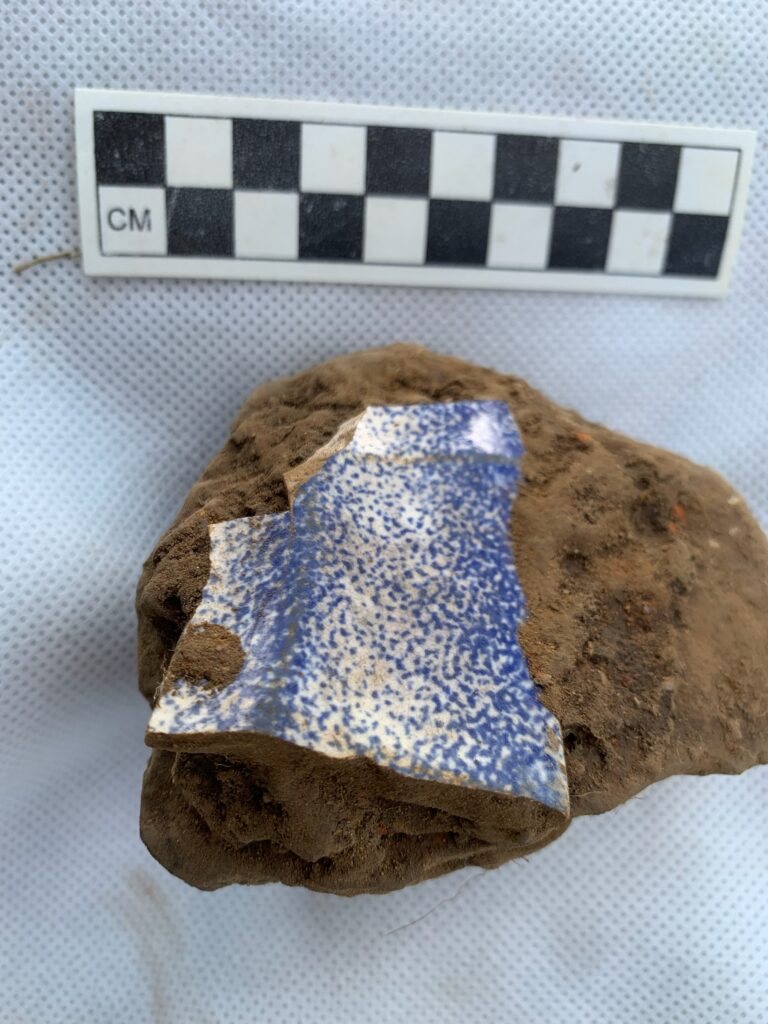In the realm of archaeology, the study of artifacts serves as a key to unlocking the mysteries of ancient civilizations. Recently, we had the privilege of being visited by Dr. Lindsay Bloch, founder of Tempered Archaeological Services, LLC. Dr. Bloch, a seasoned archaeologist and anthropologist, has dedicated her career to unraveling the secrets embedded in artifacts.
Dr. Bloch helped us to understand our artifacts beyond their archaeological context. There are several different types of ceramics scattered throughout the site, and learning how to differentiate between each artifact is a valuable tool to understanding those who were at this site before us. In this site were many decorated ceramic sherds. Dr. Bloch showed us how to differentiate between a hand painted piece and a transfer printed piece. Below is an image of a sherd from Subop I, lot 4. This sherd is transfer printed, which is exemplified through the meticulous design aspects of the piece. One key aspect of transfer printed pieces is the uniformity of line work, which is present in this piece. Each line is configured little dots, which is a tell-tale sign of a transfer print. In a hand painted piece, the brushstrokes are visible, and lines are continuous and irregular, a detail which is absent from this artifact.

Transfer printed ceramic sherd from dining hall excavations.
This artifact is an example of the attempt to recreate Chinese porcelain, a highly coveted ceramic at the time in which we are working. Chinese porcelain often had intricate, hand painted designs. This artifact shows how European manufacturers tried to mimic this style by placing intricate designs, often in blue, onto a white ceramic meant to mimic original Chinese porcelain. However, it was more cost-effective for them to mechanize the creation of these pieces so workers not skilled in ceramic painting could create the ceramics at a higher volume. Dr. Bloch explained this concept and showed us genuine Chinese porcelain, which features brushstrokes that show the hand painted details by the high skilled artisans that created each piece. A ceramic of this nature imitates the decorative, highly desired Chinese porcelain tableware to satisfy the high demand of the time.
Overall, Dr. Bloch introduced highly valuable techniques of understanding the artifacts which we excavated. From differentiating between pearlware and whiteware to understanding the design differences between different styles of the time, she helped us to determine precious information about our artifacts. She illuminated the meticulous process of uncovering the stories hidden within artifacts and provided a glimpse into the thrilling world of archaeological discovery. Dr. Bloch’s expertise, combined with her passion for the subject, was extremely appreciated by all, and will prove useful for the coming weeks of our laboratory analysis.




